A guide to fly fishing Mill Run on the Welsh Dee at Llangollen
Welcome to my fly fishing review of Mill Run, which is based on 20+ years of knowledge and experience of fishing the Welsh Dee at Llangollen.
Mill Run is my favorite pool on the Ddol-ISAF beat, where I’ve had many great days fly fishing for grayling and trout.
In addition, I have caught a few sea trout fishing Mill Run but still trying to hook a salmon there. However, my son lost a salmon in the tail of the pool, when it lept into the air and threw the hook.
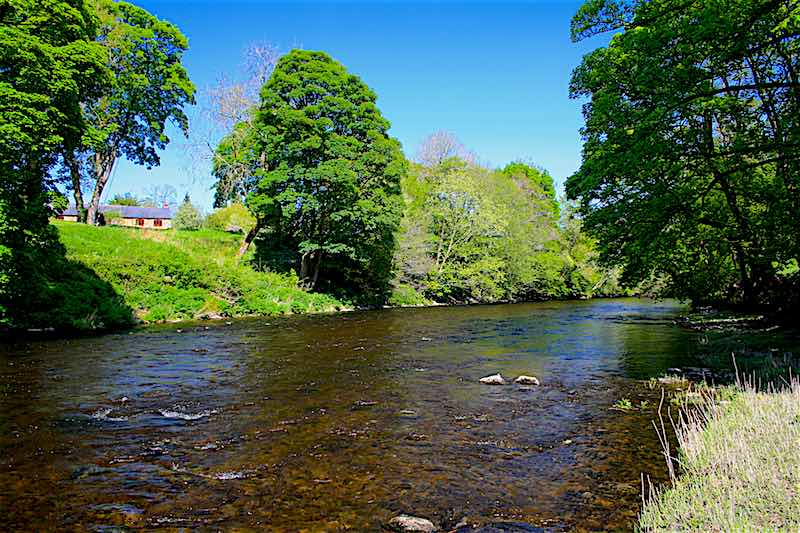
Fly fishing Mill Run for trout and grayling
I find fly fishing Mill Run is best when the Welsh Dee is less than 0.7m (Corwen gauge). Generally, I have the most success for trout and grayling when the river level is less than 0.6m.
The photograph above shows where I start fishing Mill Run when the river is at its summer level. From that place, it’s possible to fish all the way to the tail of the pool.
Wading down under the trees is hazardous because the riverbed is composed of large boulders and other underwater obstacles. A sketch of the topography of the pool highlighting some of its key features is shown below:
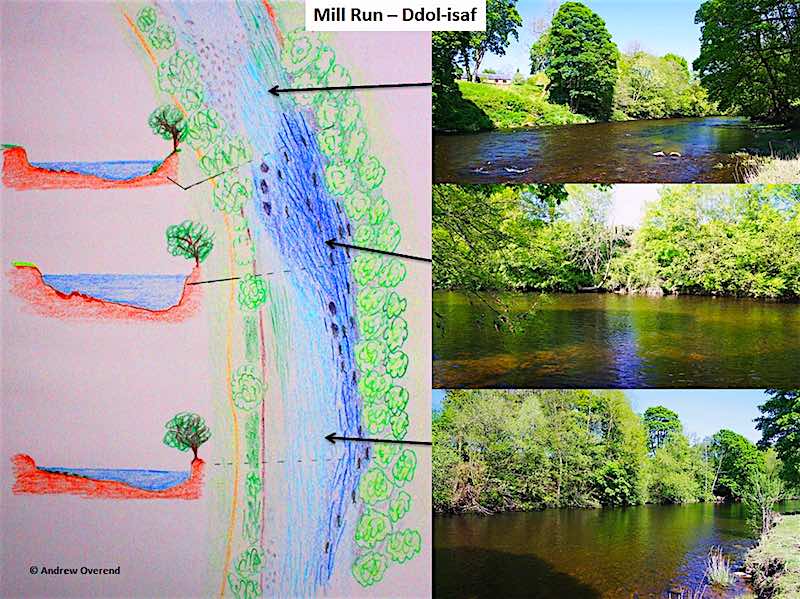
The distribution of trout and grayling in this pool is primarily governed by river height. At about 0.5m (Corwen gauge), they are often found in the riffle down to the drop-off zone, which is where the river bend to the right. From the drop-zone to the tail, they often lie close to the overhanging trees on the far bank.
At river levels above 0.6m, fish lie in the slack-water sections of the pool close to the right bank.
My approach to fishing Mill Run, as with many pools on the Welsh Dee, depends on the time of the year, river, and weather conditions.
Fly fishing Mill Run for Grayling October to February:
Czech nymphing
Mornings are usually cold at this time of year and the grayling are feeding close to the riverbed. Therefore, I start by fishing a team of Czech nymphs on a 4lb fluorocarbon leader, spaced 18″ apart.
Usually, I put the heavy fly on the middle dropper and flank it with two smaller nymphs (size 16 and smaller). The aim here is to fish that all three flies close to the river bed. If you find this set-up snags the riverbed or gets tangled too often, then move the heavy nymph to the point.
The following selection of nymphs is one that I find will catch grayling on the Welsh Dee:
Czech nymph setup for clear water:
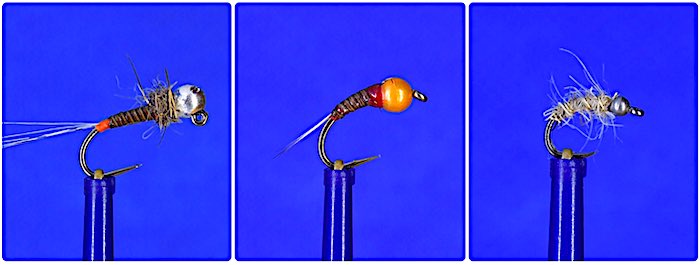
Czech nymph setup for coloured water:
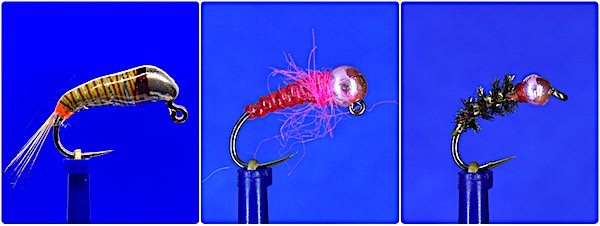
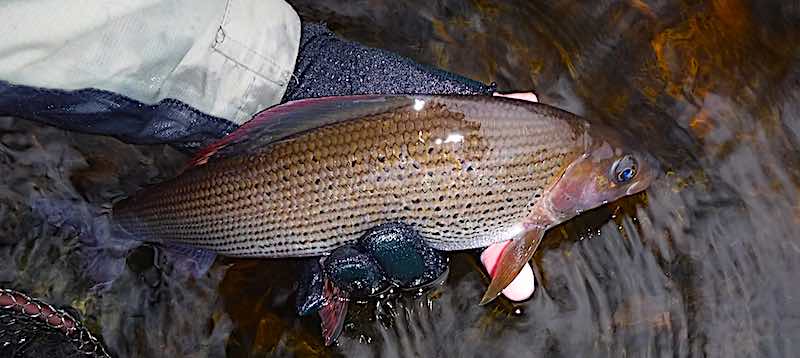
Wet fly fishing Mill Run:
As the day warms up, if you stop catching fish on the nymphs or you start to see grayling taking flies in or close to the surface, then it’s often a time for a change of approach…
When the above happens, I usually change to fishing a team of wet flies or spiders on a 3lb copolymer leader spaced 3ft apart.
My default wet fly setup for the Welsh Dee at this time of year is as follows. Point: Black Pennell (size 14 or 12); middle dropper: size 14, grouse & pheasant bling spider; and top dropper: pearl-ribbed March Brown spider (size 16 or 14).
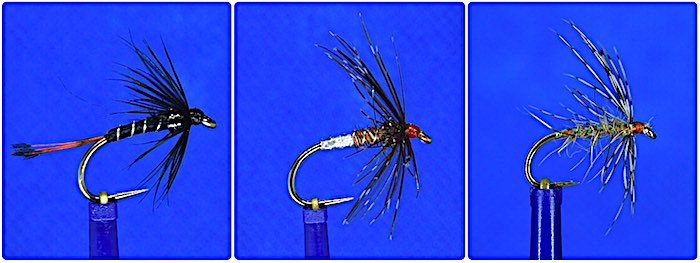
If you’ve not had any takes after 15 minutes of fishing, it’s time to start substituting the flies. Try varying sizes or general colours until success comes.
If the wets fail to catch any fish, which is rare, switch to dry fly fishing.
Dry fly fishing Mill Run for grayling:
It is best to start dry fly fishing for grayling from the tail of Mill Run and progressively work your way upriver. Don’t just cast to rising fish but cover all likely areas of the river that you think might be holding grayling.
For fly selection, I try to match the colour and size of the hatch. If this proves difficult, I’ve found fishing the following double dry set-up usually works (large sight fly (size 12 or 10) e.g. Elk Hair caddis and a trailing small fly (14 to 20) e.g. Griffith’s Gnat:
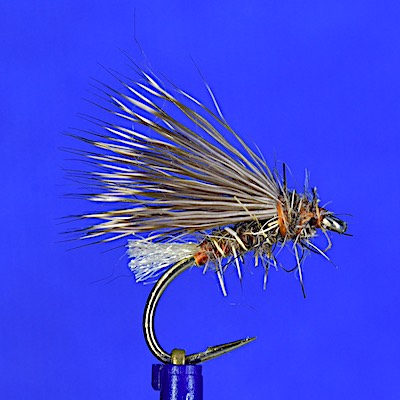
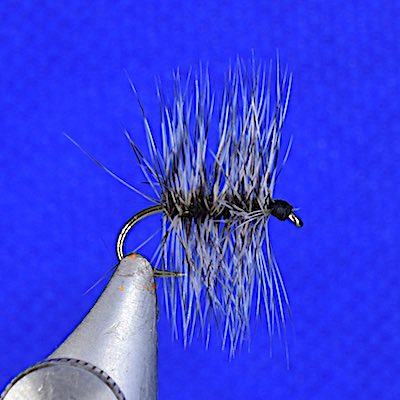
The following link will give you a more detailed post on fly tips for winter fishing on the Welsh Dee:
Fly fishing Mill Run from March to September:
The brown trout fishing season on the Welsh Dee starts on the 3rd of March. At this time of year in Llangollen, the weather is often more like winter than spring. Therefore, my approach to brown trout is similar to that described for autumn & winter grayling in the above sections.
Once April arrives, the weather usually starts to warm up and hatches of Large Dark Olive, March Brown and other olives become more frequent from mid-morning to mid-afternoon. This provides more opportunities to catch brown trout on the dry fly, by matching the hatch.
By late April / early May the trees on the river bank come into leaf and, at this point, my preferred approach to fishing Mill Run becomes more dependent on the river height, cloud cover, and time of day.
If it is a warm overcast day I quite often find that a team of wet flies or spiders works well. Casting them as close to the trees on the far bank as possible, then let them swing round in the current to the dangle, followed by retrieving them very slowly.
In Mill Run, trout are normally taken in the region of the drop-off zone as the river starts to bend to the right slightly and in the slacker water under the overhanging trees on the right bank.
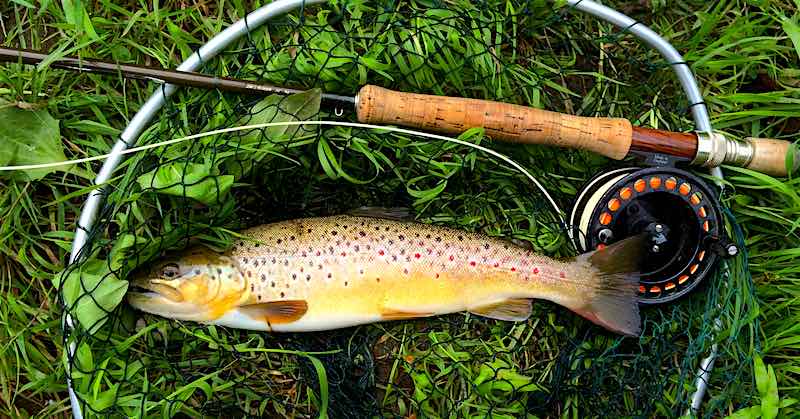
When fish are rising freely to a hatch, dry fishing is generally the best approach. If possible, select a fly that best matches the hatch. If your fly doesn’t result in any offers within 10 minutes then it’s time to change the fly for another pattern and repeat until you get success.
When the river is running off after a spate and still carrying some colour, Czech nymphing is often the best approach. Under these conditions, the drop-off zone at the head of the pool produces better fish.
The following links will take you to posts that cover flies for other months of the year:
Trout and grayling fly fishing round-up:
October to April
Largely my approach depends on water/air temperature.
On cold days Czech nymphs work well, particularly when there is little or no fly activity on the surface.
When flies are observed coming off the water dry fishing can yield good results.
However, I find wet flies, spiders and nymphs fished close to the usually out fish dries.
May to September
The approach depends on the time of day & cloud cover.
Early morning wet flies, spiders & nymphing techniques work well followed by dry flies.
On sunny days, by mid-day onwards focus on fishing well-oxygenated, shady runs with Czech nymphs.
In the evening dry flies and wet flies fished close to the surface usually pay dividends.
Fly fishing Mill Run for Sea trout
Mill Run is NOT a pool for sea trout fly fishing at night because there are just too many hazards to contend with (i.e. OVERHEAD POWER CABLE, overhanging trees on both banks, large boulders to wade around, etc..).
However, when there is enough light to see the hazards (i.e. early morning or late evening), I have managed to catch sea trout (ca. 1 – 2lbs). During the day sea trout lie under the shelter of the overhanging trees on the far bank. To target these fish I use a team of small wet flies & spiders (sizes 14 to 12) spaced 3ft apart on a 3lb copolymer leader.
Cast the wet flies between the gaps in the trees, let them dead drift under the overhanging branches. Add the occasional upstream to the line, which adds additional movement to the flies and slows their drift. Takes generally come immediately after the mend and are often violent…
“Therefore, a soft action rod is needed to absorb the take when fishing fine line.”
Flies that I have found to work well include: black hopper, March Brown spider, Black Pennell, silver cormorant, brown sedge patterns, etc.
To learn more about fishing for sea trout during daylight check out the following post.

Directions & Parking for fishing Mill Run
Access to Ddol-Isaf is via the A5 between Forncysyllte and Llangollen Golf Club (see map). You must take a tag from the sign-in box on the gate at the entrance to the track that takes you down to the farm. Parking is limited to the marked area before the farm; you must follow club rules about parking here.
The gate on your right, when facing the car park, leads you down to the river to Mill Run; following the signs on the track through the wood. Walk downriver until you can see the converted mill on the far bank; the riffle above this is the start of Mill Run.
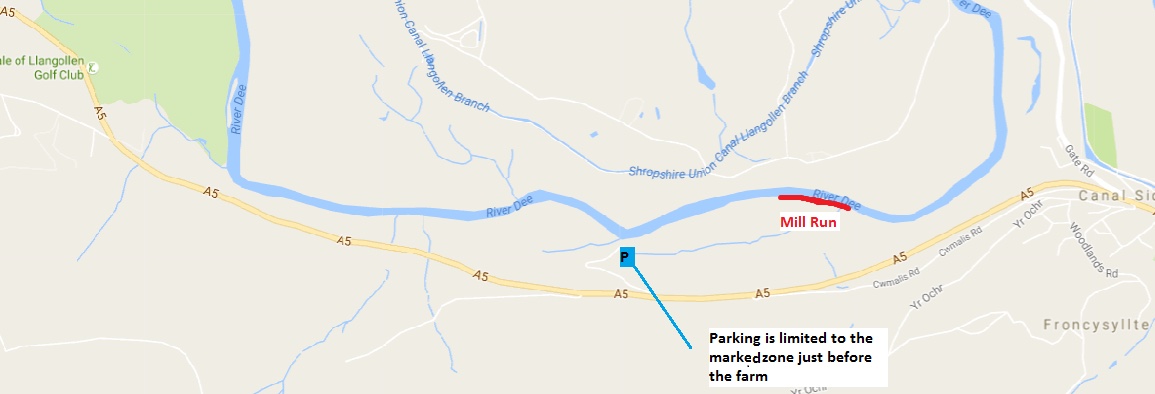
[Disclaimer – like most outdoor sports, fishing is not without its hazards. Therefore, before fishing Mill Run you are responsible for your own safety and MUST do YOUR OWN RISK ASSESSMENT based on YOUR EXPERIENCE and the RIVER CONDITIONS. Especially, if you decide to fish at night. In addition, you MUST follow the Llangollen-Maelor angling club rules when accessing, parking and fishing this water.]